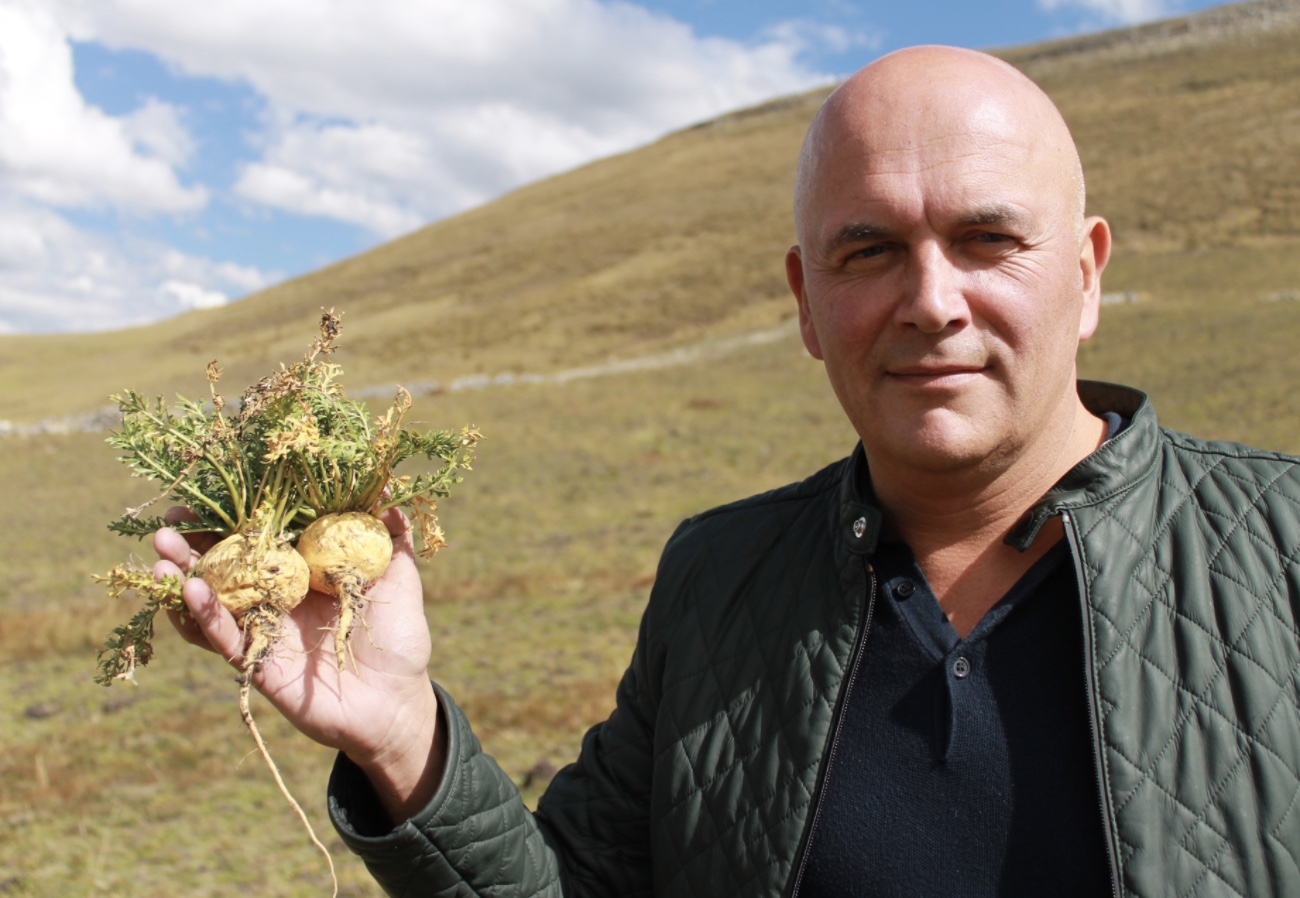
In search of the origins of maca
Real Peruvian maca (Lepidium meyenii), of the kind used by Biotona Maca powder, Superboost en MacaQuik®, can only be found above an altitude of 4,000 metres in the beautiful mountain landscape of the Andes. With its fierce sun, strong winds and temperatures near freezing, it is an environment where few plants can thrive. To protect itself against these harsh conditions, maca produces its own range of protective substances, which can also be beneficial for our health.

Maca is a tuberous vegetable derived from Lepidium meyenii and is still widely used in the Andes region as an important source of food that also contains many phytonutrients. Maca tubers can be eaten either fresh or dried. Their nutritional richness was already known as long ago as Inca times, when they were fed to warriors before going into battle as a powerful stimulant for both body and mind.
There are 3 varieties of maca: yellow, red and black. However, the sowing of a red seed (for example) does not guarantee that the resulting tubers will also be red. For this reason maca powder is usually a mix of all three varieties.
The extreme conditions in the Andes play a crucial role in the development of the active ingredients in maca. Researchers at the University of Prague have analysed maca that was grown in greenhouses or fields in the Czech Republic. The ‘European’ tubers were found to contain far lower levels of macamides (the quality markers for maca).
